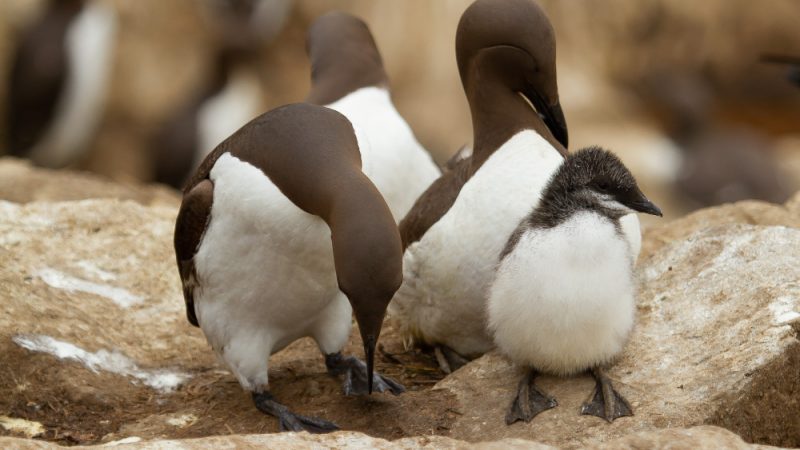Located on the southeastern coast of Argentina, Peninsula Valdes Argentina Peninsula Valdes is one of the most extraordinary wildlife havens in the world. This UNESCO World Heritage Site boasts a unique mix of coastal and steppe ecosystems that are home to an array of fascinating and rare species. Whether you’re a nature enthusiast, an avid photographer, or simply someone looking to explore the wild beauty of Argentina, Peninsula Valdes provides the perfect opportunity to witness some of the planet’s most awe-inspiring wildlife.In this article, we’ll guide you through nine unique species that you can spot during your visit to Peninsula Valdes, showcasing their behavior, habitats, and tips on how to best observe them.
1. Southern Right Whale (Eubalaena australis)
- The Southern Right Whale is perhaps the most famous resident of Peninsula Valdes, drawing nature lovers from around the world. Every year, between June and December, these gentle giants migrate to the Golfo Nuevo and Golfo San José for breeding and calving. Watching these massive creatures breach the water or spy-hop is one of the most awe-inspiring experiences you can have on the peninsula. Puerto Pirámides, the village on the peninsula, offers boat tours that bring you up close to these magnificent mammals.
- These whales can grow up to 18 meters long and weigh as much as 60 tons, making them one of the largest animals on Earth. While Southern Right Whales are the most commonly seen, their calving season also brings mothers with their newborn calves, adding a heartwarming element to your experience.
2. Orca (Orcinus orca)
- Orcas, or killer whales, are another highlight of the peninsula’s wildlife. The region is one of the few places in the world where orcas are known to beach themselves in order to hunt for sea lions. From October to December, these apex predators can be spotted near Punta Norte, where they work together to trap sea lions along the shore. The phenomenon is known as “strand feeding,” and witnessing it is an incredibly rare and thrilling experience.
- Orcas can be seen from both land and boat tours, and their distinctive black-and-white markings make them a memorable sight. Peninsula Valdes Argentina While sightings of orcas can be less predictable than those of the Southern Right Whales, this behavior makes the peninsula a unique location for those hoping to see these majestic creatures in action.
3. Magellanic Penguin (Spheniscus magellanicus)
The Magellanic Penguin is another star species at Peninsula Valdes. These small, strikingly black-and-white birds nest in large colonies on the peninsula from September to April. The most notable colony is located at Estancia San Lorenzo, where visitors can walk through the nesting sites to observe the penguins up close.
Peninsula Valdes Argentina These penguins are famous for their energetic behavior, including their noisy calls and amusing waddling gait. During the breeding season, they are seen tending to their nests, feeding their chicks, and interacting with their mates. Watching a penguin colony bustling with activity is an unforgettable experience.
4. Sea Lion (Otaria flavescens)
Sea lions are one of the most abundant species on Peninsula Valdes. The island of Isla de los Lobos, located just off the coast, is home to one of the largest colonies of South American sea lions. These marine mammals can be seen lounging on the rocks, swimming in the water, or playfully interacting with each other. Their playful nature and loud vocalizations make them a favorite among visitors.
While sea lions can be found in several areas on the peninsula, the best place to see them is at Caleta Valdes, where you can observe hundreds of sea lions sunbathing and socializing. The surrounding cliffs offer great vantage points for photographing these lively creatures in their natural habitat.
5. Guanaco (Lama guanicoe)
Peninsula Valdes Argentina The guanaco, a wild relative of the llama, roams freely throughout the steppes of Peninsula Valdes. These graceful herbivores are well-adapted to the harsh, arid environment and can often be spotted grazing in the open plains. Guanacos have a striking reddish-brown coat and long, slender necks, which make them a beautiful sight against the backdrop of the rugged Patagonian landscape.
Guanacos are most commonly found near the central and northern parts of Peninsula Valdes, where they blend into the wild, open landscape. They are often seen in small herds, and visitors can enjoy the sight of these animals moving gracefully through the terrain.
6. Rhea (Rhea americana)
Rheas are the largest birds in South America, standing nearly 1.5 meters tall. These flightless birds are similar to ostriches but are native to the Patagonian steppe. While rheas can be found in several regions of Argentina, the peninsula offers excellent opportunities for spotting them in their natural environment. Peninsula Valdes Argentina With their long legs and large, striking bodies, rheas are an unmistakable sight.
Rheas are typically seen in open grasslands and are known for their fast running speed. They are omnivores and can be observed foraging for plants, insects, and small animals. A great place to see them is along the roads and trails of Peninsula Valdes, where they are often seen roaming in small groups.
7. Patagonian Fox (Lycalopex griseus)
The Patagonian fox, also known as the grey fox, is a nocturnal species that roams the steppes of Peninsula Valdes. Peninsula Valdes Argentina These small, elusive creatures are known for their keen hunting skills and are often seen hunting small mammals and birds. While they are more commonly spotted at night or during dawn and dusk, it’s possible to see them in the wild if you’re patient and observant.
The Patagonian fox has a distinctive grey coat and a bushy tail. They are solitary animals, often found hunting alone, and they tend to shy away from human interaction. If you’re lucky, you may catch a glimpse of one as it disappears into the bushes or crosses a dirt road in the early hours of the morning.
8. Southern Elephant Seal (Mirounga leonina)
Southern Elephant Seals are another remarkable species to see on Peninsula Valdes. These massive seals are named for the large, elephant-like noses of the males, which they use for vocalizations. Peninsula Valdes Argentina The peninsula is home to large colonies of elephant seals, which can be observed at various sites, including the beaches near Punta Delgada and Playa de los Ingleses.
Elephant seals are particularly notable for their size—adult males can weigh up to 4,000 kilograms—making them one of the largest seal species in the world. Watching these animals haul themselves onto the beach to rest or fight for dominance during the breeding season is an unforgettable experience.
9. Andean Condor (Vultur gryphus)
Peninsula Valdes Argentina The Andean Condor, one of the largest flying birds in the world, can occasionally be spotted soaring above the cliffs and valleys of Peninsula Valdes. These magnificent birds have wingspans of up to 3 meters, and their soaring flight over the dramatic landscapes of the peninsula is a breathtaking sight.
Though they are more commonly associated with the Andes mountains, Andean Condors are also found in the open Patagonian steppes. The best way to spot them is by visiting high vantage points like the cliffs of Punta Delgada, where you might see them gliding majestically overhead in search of carrion.
Conclusion: A Wildlife Lover’s Dream Destination
Peninsula Valdes Argentina Peninsula Valdes is undoubtedly one of the world’s premier wildlife destinations. From the iconic Southern Right Whales and orcas to the elusive Patagonian fox and the impressive Andean Condor, the peninsula offers a rare opportunity to witness a diverse range of species in their natural habitats. Whether you are an avid wildlife photographer, a nature enthusiast, or someone simply looking to experience the wonders of Patagonia, Peninsula Valdes should be at the top of your travel list.
Peninsula Valdes Argentina The best way to appreciate this incredible biodiversity is to spend time exploring the region’s varied ecosystems, from its coastal beaches to its vast steppe. With each visit, you’ll discover something new and unforgettable about this natural wonderland.
FAQs
1. When is the best time to visit Peninsula Valdes for wildlife sightings?
Peninsula Valdes Argentina The best time to visit Peninsula Valdes is from September to April. This period covers the peak wildlife seasons, including the Southern Right Whale and Magellanic Penguin breeding seasons, as well as the orca and sea lion sightings.
2. Can I see orcas during my visit to Peninsula Valdes?
Yes! Orcas can be spotted between October and December, primarily at Punta Norte, where they engage in their unique strand-feeding behavior.
3. Is it possible to visit Peninsula Valdes on a guided tour?
Absolutely! Several tour companies in Puerto Madryn offer guided excursions to Peninsula Valdes, Peninsula Valdes Argentina including whale-watching trips, wildlife tours, and hiking excursions.
4. What is the best way to spot wildlife in Peninsula Valdes?
Peninsula Valdes Argentina The best way to spot wildlife is by taking boat tours for marine animals, such as whales, orcas, and sea lions. On land, Peninsula Valdes Argentina guided tours and hiking are great ways to see guanacos, rheas, and foxes.
5. How accessible is Peninsula Valdes for travelers?
Peninsula Valdes Argentina Peninsula Valdes is easily accessible from Puerto Madryn, Argentina, which is approximately a 1.5-hour drive from the peninsula. Visitors can explore the area by car, bike, or through guided tours.
Also read : Banking Fintechzoom: 10 Powerful Innovations Reshaping the Banking World









